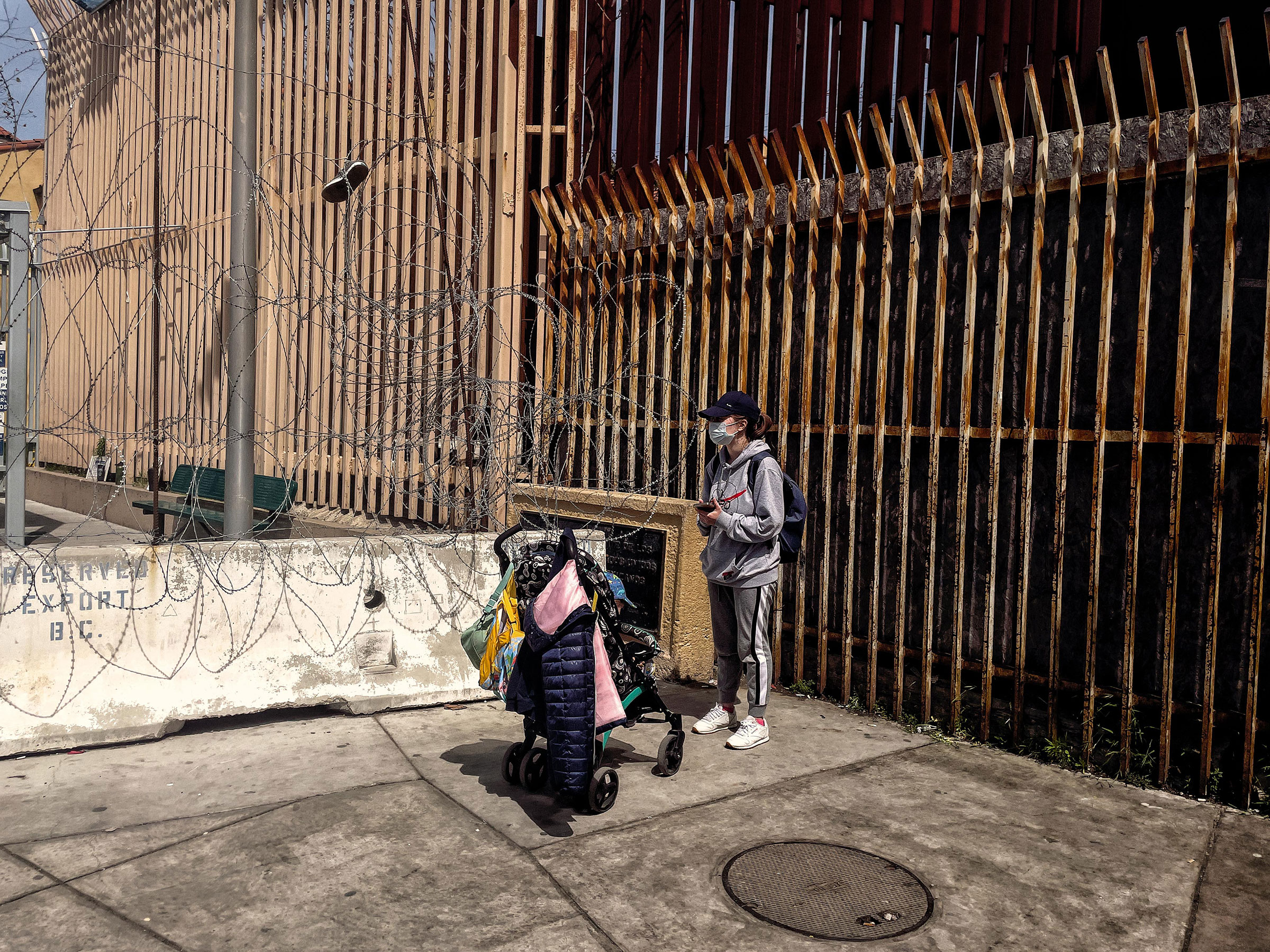
On April 26, the Biden Administration will argue before the U.S. Supreme Court that it has the authority to end a controversial Trump-era policy that requires migrants seeking asylum in the United States to wait in Mexico while their claims are reviewed—even as it has signaled a possible increase of the use of that same policy in the interim.
The Biden Administration has attempted to end the Migrant Protection Protocols (MPP)—often referred to as the “remain in Mexico” policy—since June 2021. Texas and Missouri challenged the move, arguing the Administration does not have the authority to end the policy the way that it did. Now, the Supreme Court will decide whether the Administration must continue implementing the policy until Congress takes action.
MPP is not the only Trump-era immigration policy the Administration is seeking to end. On April 1, the Biden Administration announced plans to lift Title 42, a public health policy that allows the federal government to immediately expel anyone who attempts to make an unauthorized crossing into the U.S. in the name of preventing the spread of COVID-19. Unlike under MPP, migrants can be expelled en masse under Title 42 without being given the right to file an asylum claim.
States have challenged the Biden Administration’s authority to end both policies, and ongoing litigation has complicated whether the Department of Homeland Security (DHS) can lift the policies the way it wants to. In an April 1 call with reporters, a DHS official told reporters that they will “employ” MPP in “much greater numbers post-Title 42” to manage the flow of migrants at the border. “We are under a court order to reimplement MPP in good faith,” the official continued, “and as part of those good faith efforts, we have been systematically increasing our enrollment under MPP.”
Immigrants’ rights groups have criticized that position as hypocritical. Karen Tumlin, director and founder of the advocacy group Justice Action Center, says she is “extremely disappointed,” adding that increasing MPP in the wake of Title 42 seems “worse than one step forward in two steps back.” Nicole Ramos, the director of the Border Rights Project at Al Otro Lado, says an increase in MPP is “nothing more than a deterrent and an attempt to undermine the right to seek asylum at the U.S.-Mexico border.”

But the Administration says its hands are tied. In December, the 5th Circuit ordered DHS to continue implementing MPP, and it remains bound by that court order. Recent data shows the Administration has increased enrollment in MPP by several thousand since the order.
“Secretary of Homeland Security Alejandro N. Mayorkas has repeatedly stated that MPP has endemic flaws, imposed unjustifiable human costs, pulled resources and personnel away from other priority efforts, and failed to address the root causes of irregular migration,” a DHS spokesperson tells TIME. “DHS, however, is under a court order to reimplement MPP, which it continues to fight in the courts including in a challenge before the Supreme Court. In the interim, the Department is required to abide by the order to re-implement the program in good faith. As it does so, the Department is committed to implementing MPP in the most humane way possible.”
The Supreme Court could determine whether that order stays in effect. But regardless of what ultimately happens to MPP, the back and forth over its fate is indicative of a larger trend in U.S. immigration policy. Theresa Cardinal Brown, the managing director of immigration and cross-border policy at the Bipartisan Policy Center, argues that after the last near-decade of immigration lawsuits over federal government policies from both sides of the aisle, “We’re now at, I think, peak confusion.” Often as soon as a policy is put in place, a lawsuit is filed to stop it, a court may block it, and then a higher court reverses that order, and so on all the way up through the ponderous legal system.
“If you’re trying to figure out what the policy is on any given day, it’s a big question mark—much less what the policy is going to be in the future,” Brown says. “Because it’s not being decided by Congress that makes the laws. It’s not being decided by the executive branch that is supposed to implement the laws. It’s being decided in judiciary. And that is creating a whole lot of confusion for everybody.”
‘Hindenburg crashing into the Titanic’
If the Biden Administration gets its wish and courts affirm it can end both contested immigration policies, lawmakers in both parties worry there could be a surge in people arriving at the U.S.-Mexico border.
Without Title 42 or MPP in place, America’s immigration policy would largely return to what it looked like during the Obama years. Prior to 2019, migrants arriving at the border were either processed in immigration court or subject to expedited removal. Whether or not they were detained was subject to availability of detention facilities and discretion. But now there is a much greater volume of people arriving at the border, Brown says, and more diversity of nationalities seeking to enter the country, which can complicate the deportation process.
Republicans and some centrist Democrats have expressed alarm, arguing that lifting Title 42 and MPP, which supporters argue have functioned as deterrents to migration, could lead to a surge of people at the southern border. Mark Morgan, a visiting fellow at the Heritage Foundation and former acting commissioner of U.S. Customs and Border Protection (CBP) under President Donald Trump who enforced both policies, tells TIME he thinks ending MPP and Title 42 will be like the “Hindenburg crashing into the Titanic.” Immigrants’ rights advocates, on the other hand, argue the programs have failed to deter asylum seekers, pointing to the close to two million times Title 42 has been used to expel people since March 2020, stranding many migrants in dangerous conditions in Mexico.
Even if the Biden Administration wins before the Supreme Court, MPP won’t go away overnight. The case will go back down to the federal district judge in Texas, who will decide whether the Biden Administration’s October 2021 attempt to end MPP was valid. So realistically, even if the Supreme Court sides with the Administration, MPP will still be around for at least several more months. And if the Biden Administration loses before the Supreme Court, MPP would likely stay in place until Congress takes action, which probably wouldn’t be any time soon, as the midterms loom and border security once again appears to be a key issue for voters.

Regardless of what happens to MPP, lawmakers on both sides of the aisle have also pushed against the Biden Administration’s move to end Title 42, arguing there could be a crisis at the border at the end of May. On April 7, five Democrats and six Republican Senators introduced a bill that would prevent DHS from lifting Title 42 without a detailed plan to prevent a wave of migration in its wake. And over 20 states have joined a lawsuit initially filed by Arizona, Louisiana, and Missouri on April 3 asking a judge to immediately block the Administration from ending the policy, arguing Title 42 is a crucial tool stopping a “catastrophe” at the border.
Ramos of Al Otro Lado says her organization is encouraging asylum seekers to wait for “clearer information” and not to “all arrive at the border on May 24,” to try to avoid perpetuating the narrative that there will be chaos come the end of May.
But courts could shake up the system again even sooner. Oral arguments in the case over whether the Biden Administration can end Title 42 may happen in a Louisiana district court next month, and the states very well could win a temporary injunction on the Administration’s attempt to lift the policy until the litigation is completed—just as they did with attempts to end MPP. “We have seen so far that judges are very willing to step in and stop the Biden Administration from lifting any Trump-related policies. And there is certainly a chance that that happens again,” says Aaron Reichlin-Melnick, senior policy counsel at the American Immigration Council, which filed a brief supporting the government’s request to end MPP.
Meaning that right as the fate of MPP is decided, the same cycle could begin again with Title 42, and the options available to asylum seekers would once again hinge on what the most recent federal court has ruled.
— With reporting by Jasmine Aguilera
More Must-Reads from TIME
- Cybersecurity Experts Are Sounding the Alarm on DOGE
- Meet the 2025 Women of the Year
- The Harsh Truth About Disability Inclusion
- Why Do More Young Adults Have Cancer?
- Colman Domingo Leads With Radical Love
- How to Get Better at Doing Things Alone
- Michelle Zauner Stares Down the Darkness
Write to Madeleine Carlisle at madeleine.carlisle@time.com